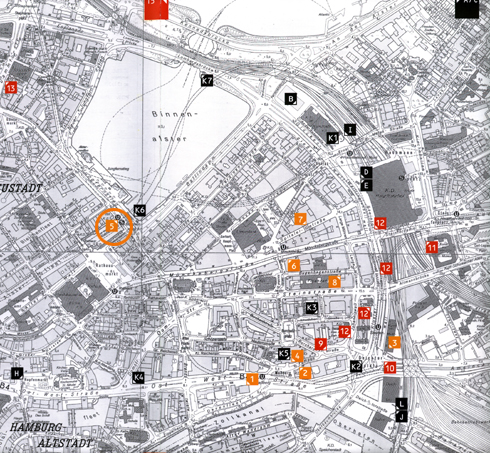publicsphere HB
2000


The Crackit_Project was a part of the Aussendienst exhibition Series curated by Thomas Schmidt-Wullfen.


click here to look at the other participants (Angela Bulloch, Liam Gillick, Julia Scher etc.)
INTRODUCTION IN PHASE 2: AUSSENDIENST examines the role of art in our increasingly differentiated society and urban public life that can be viewed as a compound of rival groupings. What are the tasks now facing art in the competitive to-and-fro between public interests, group identities and their ideologies? Can artists become actively involved in social processes, and will their interventions enhance the democratic community?
In the course of three exhibition phases spanning one year, AUSSENDIENST presents a series of contemporary artistic positions that in highly varied ways reflect different domains of urban public life. As an exhibition cycle with a thematic agenda, flexible duration and overlapping individual projects, AUSSENDIENST is also attempting to establish a new presentational form somewhere between isolated, individual projects and the classical group exhibition.
Whereas the key exhibition area of phase one of AUSSENDIENST was staged on an axis running from Hamburg's Outer Alster Lake, through the 'Art Mile' and the Kunstverein in the city centre and ending in the harbour, the focus of phase two shifted to the department store (as the major site of public activity in the city) and the media-based locations of public address systems and the internet. Similar to the cross-section of highly varied urban geography highlighted in phase one, these spaces of public communication and consumption pose a plethora of exemplary social questions that offer challenging perspectives for artistic intervention.
The fragmentation of formerly relevant forces of social authority into ever-smaller particles of public interest calls for novel forms of aesthetic intervention. This structural change in public life has largely been brought about by the advance of computerization. This also accounts for the fact that the phase two projects were realized in cooperation with the media symposium Interface, which is concurrently being held under the theme of 'The politics of the machine' (www.interface5.de). Nowadays it would be hard to imagine day-to-day communication without the range of publicly available information and discourse that has been generated by the internet. While, on the one hand, computer networks enhance real-time communication between individual users, on the other, it now seems well-nigh impossible to maintain the privacy of such dialogues. Does the emergence of the internet require us to redefine our concepts of public and private?
Of the projects in phase two of AUSSENDIENST there are several which call for the active involvement of users to explore the specific structures of the World Wide Web, thereby reflecting the possibilities and limitations of this new dimension of the public domain
(Text see:
http://www.aussendienst.hamburg.de/
framead.htm